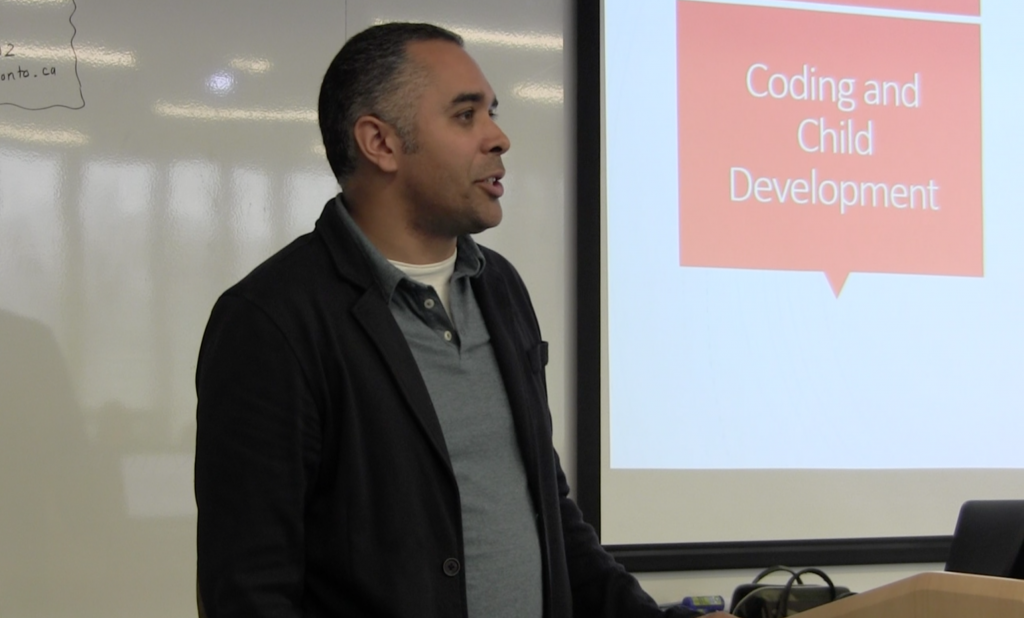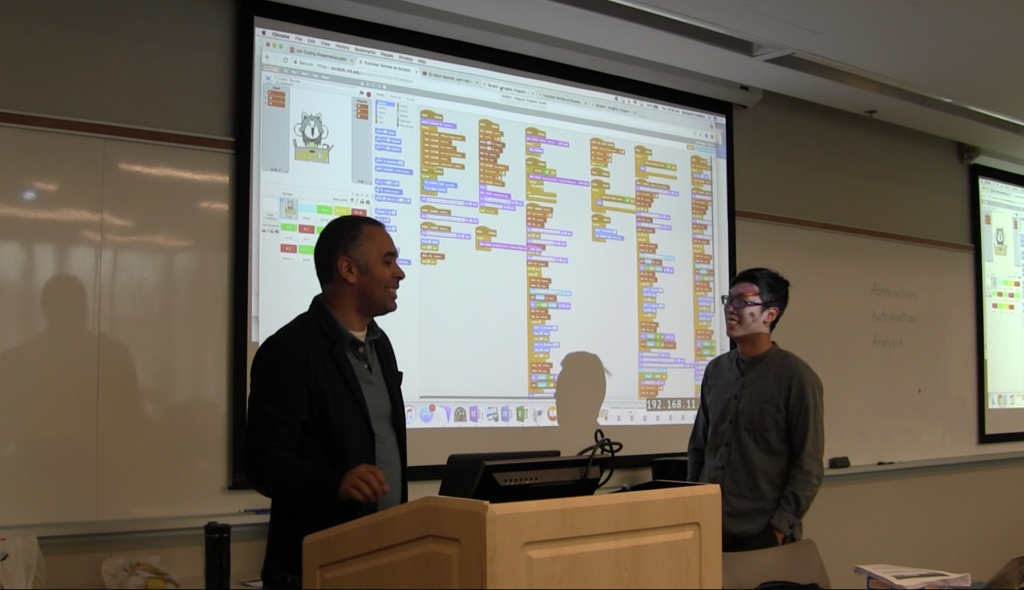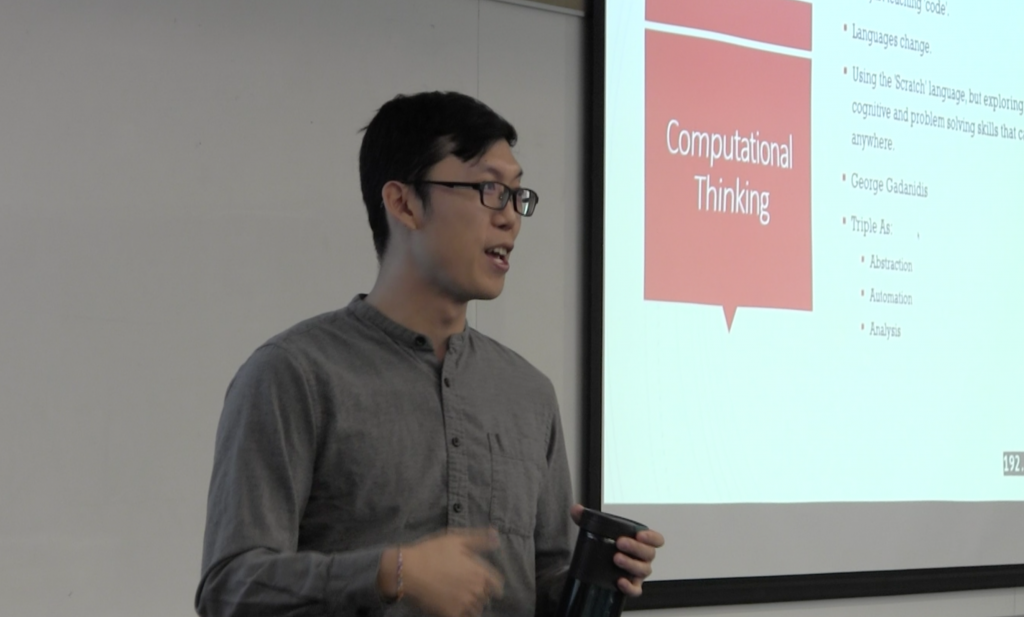On March 29, JICS Grade 6 teacher Ben Peebles and JICS special education teacher Nick Song demonstrated to teacher candidates how coding is enhancing math education at the Dr. Eric Jackman Institute of Child Study.
“Coding can really give us an opportunity to integrate authentic uses of mathematics,” Ben told the students in Bev Caswell’s second-year MA math class at OISE (U of T). “It can integrate things that children have already learned and give those things authentic purpose. But it can also give authentic purpose to learn certain components of mathematics that they will need in order to solve problems in math.”
- JICS Grade 6 Teacher Ben Peebles explains the role coding can play in child development
- JICS Teachers Ben Peebles and Nick Song show some of the coding a Grade 6 student created
- JICS Technology Teacher Nick Song shares insight on developing computational thinking with students
Introducing coding in JICS classrooms has been carefully thought out, Nick says. Teachers share coding programs with students, but there is also an awareness that coding is an ever-evolving area of practice.
“At JICS, we want to look at the framework behind coding. One of the reasons is that coding languages changes,” he says. “About 40 years ago, computer programmers were using punch cards and now we’ve moved to coding using Scratch, which is a very visual-based programming language. So, code always changes, but the underlying ideas stay the same.”
Ben and Nick introduced the MA students to Scratch, an online tool developed by students at MIT intended to teach children coding/programming in an easy, visual way.
“There’s a very low floor high ceiling approach to this. Scratch is very easy to get into – it’s visually based, it’s a drag and drop simple process that almost all the kids pick up naturally,” says Nick. “But it also allows for kids to go as far as they want. It’s also very naturally collaborative. When we did this in the classroom, the kids… were open to helping their peers and sharing any code they created.”
Ben and Nick shared some one the projects that his Grade 6 students had created using Scratch. The Grade 6 students were tasked with creating an online version of the “function machine” they had created in their classroom earlier in the year. A “function machine” is when students input a number and the machine outputs a different number calculated by a predetermined function. For example, if a student inputs the number 2 and the “function machine” has a function of 2x+2, the machine would output the number 6. When the Grade 6 students created their function machine online, it was up to them to problem solve why it was or wasn’t working.
“What we see in the classroom when kids are working on these projects is that there is instant feedback when something doesn’t work,” Nick said. “Code is pretty good at telling you where exactly something went wrong or kids can figure out where to pinpoint their efforts to fix that problem.”
They showed an example of the online interface created by one of his Grade 6 students. He then showed the MA students the coding behind this interface.
Ben also highlighted that one of his students who doesn’t excel in math became a leader in the class when coding was introduced.
“Coding is good for kids because kids are explorative. Sometimes it’s in math that we lose that sense of explorative learning the most and it’s actually a place that’s so ripe for explorative learning,” he says.



